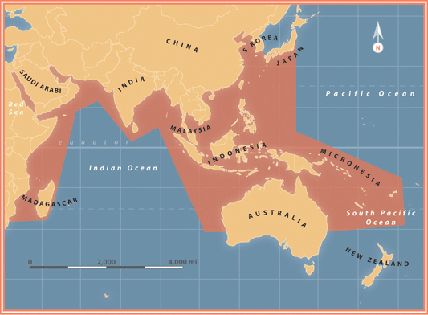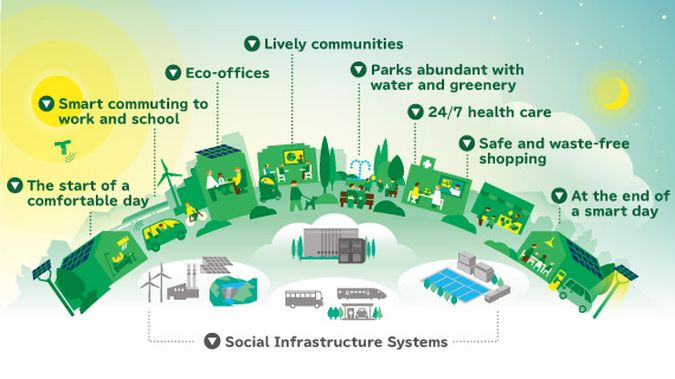IASbaba's Daily Current Affairs Analysis, IASbaba's Daily Current Affairs September 2015, International, National, UPSC
Archives
IASbaba’s Daily Current Affairs- 16th September, 2015
INTERNATIONAL
India’s ties with Australia and in the indo- pacific region
- India and Australia have several commonalities, which serve as a foundation for
 closer cooperation and multi-faceted interaction, on lines similar to what India has developed with other Western countries.
closer cooperation and multi-faceted interaction, on lines similar to what India has developed with other Western countries. - The relationship has grown in strength and importance since India’s economic reforms in the nineties and has made rapid strides in all areas – trade, energy and mining, science & technology, information technology, education and defence.
- With India being the emerging democratic superpower of Asia and Australia with its matured economy, gives more scope for the relationship between India and Australia to be developed and strengthened further.
Deepening ties with Australia:
- The shared history with Australia, coupled with the shared democratic values and a strong interest in a secure Indo-Pacific region, provides India with a firm foundation upon which we can confidently pursue future engagement activities in support of joint interests.
- Economic relationship is also strong between the two countries. Indian investment in Australia was AU$10.9 billion in 2014, and Australian investment in India was AU$9.8 billion. And the annual trade is worth nearly AU$16 billion.
- Australia and India are natural economic partners and a mutually beneficial, high quality agreement will help unlock the potential of the already strong Australia-India relationship. In this background both the countries have agreed to conclude a Comprehensive Economic Cooperation Agreement by the end of the year.
- As two prominent Indian Ocean states, India and Australia are cooperating closely in the region. Building cooperation helps to provide for a more secure maritime environment.
- By 2030, the Indo-Pacific region is expected to account for 21 of the top 25 sea and air trade routes; around two-thirds of global oil shipments; and one third of the world’s bulk cargo movements.
- With the region being very important, improving security will be crucial . Under these circumstances the two countries should focus on a greater defence engagement.
Strategic aspects of indo pacific region :
- Economic growth is transforming the Indo-Pacific region, which is becoming the global strategic and economic centre of gravity.
Reports predict that by 2050, half of the world’s top 20 economies will be in the Indo-Pacific.
Some also predict that India, China, Indonesia and Japan will be in the top five economies in the world with the U.S. India’s own economic growth will be a key driver of energy demand.
- The shift of strategic weight to the Indo-Pacific is driving economic, energy and trade interdependence across the region, as states economic wellbeing and prosperity increasingly depend on free and open trade.
Greater interdependence between states is encouraging, as it reduces the likelihood of destabilising actions or conflicts.
- Across the Indo-Pacific, states are modernising their forces in line with their growing economic prosperity.
- This becomes imperative for countries to use peaceful means to resolve regional disputes, in the light of regional military modernisation.
Way Forward:
- Both Australia and India border the Indian Ocean and have a shared interest in the maintenance of freedom of navigation and trade.
- Australia recognises India’s critical role in supporting the security in the Indian Ocean.
- As two prominent Indian Ocean states, India and Australia should cooperate closely in the region to build a more secure maritime environment.
Connecting the dots:
- Comment on India’s ties with Australia from the time of its independence.
- A greater engagement between India and Australia is required to maintain peace in indo pacific region. Critically analyse.
NATIONAL
Smart cities in India : An analysis
- A year after the government first announced the Smart Cities project, we now have the list of 98 cities which will be given funds and other support to build infrastructure aimed at improving living standards.
- The good thing is the majority have less than a million people, which makes the work of building smart cities less difficult.

Need for smart cities in India:
- In the years to come India will need between 700 and 900 million square metres of new housing space annually. That’s an area equivalent to two cities the size of Mumbai.
- Water consumption per capita will increase by 45 litres a day.
- The energy use could double in the coming decade.
- In addition, the existing cities would require internal infrastructure that are equally critical — land improvement, road and earth works, sewerage, storm water drainage, flood management, solid waste management, landscaping, street lighting, building works, telecommunications, gas grids, captive power plants and light rail transport.
- Without the latest technology, India’s cities will not be able to meet these challenges.
What is a smart city?
- A ‘smart city’ is an urban region that is highly advanced in terms of overall infrastructure, sustainable real estate, communications and market viability. It is a city where information technology is the principal infrastructure and the basis for providing essential services to residents.
Characteristics of a smart city :
- Information, communication, and technology (ICT)-enabled governance:.
- Efficient utilities – energy, water, solid waste and effluents.
- Meaningful PPPs for capital creation and to bring professionalism.
- Safety and security of the people within the city.
- Financial sustainability.
- Citizen-participative local government.
- Sufficient social capital.
Challenges wrt creation of smart cities in India:
- The biggest challenge is lack of high-speed internet access.
The National Optical Fibre Network, now renamed Bharat, has been delayed by several years. Mobile operators, still struggling to get 2G voice services right, will take more time to offer uninterrupted 3G and 4G services.
- Second challenge is wrt availability of private capital.
The GIFT(Gujarat International Finance Tec-City) Project spread over 886 acres, for example, will involve investments to the tune of Rs. 78,000 crore in the next 12 years. While the government will fork out a large part, private investors may not be willing to wait for 20-30 years.
- The third challenge is wrt land acquisition.
Most of these smart cities are being built on land currently owned by villagers who may not be open to change of ownership or may want a premium price. Lack of coordination between various government agencies on project execution is the other area of concern.
Way Forward:
- The government could look at setting up a smart city governance cell that can monitor and coordinate the projects. There are other challenges such as segregation of domain expertise and authorities such as police and municipal corporation with their own agendas and structured processes.
- The realization of smart city in India will be possible if the above challenges are overcome.
Connecting the dots:
- Explain the concept of smart city by taking examples from cities across the globe.
- Explain the characteristics of a smart city.
- What are the various challenges that government may encounter while building smart cities in India.
NOTE: For more information, refer ‘IASbaba’s Monthly Magazine’- July & August 2015 .











